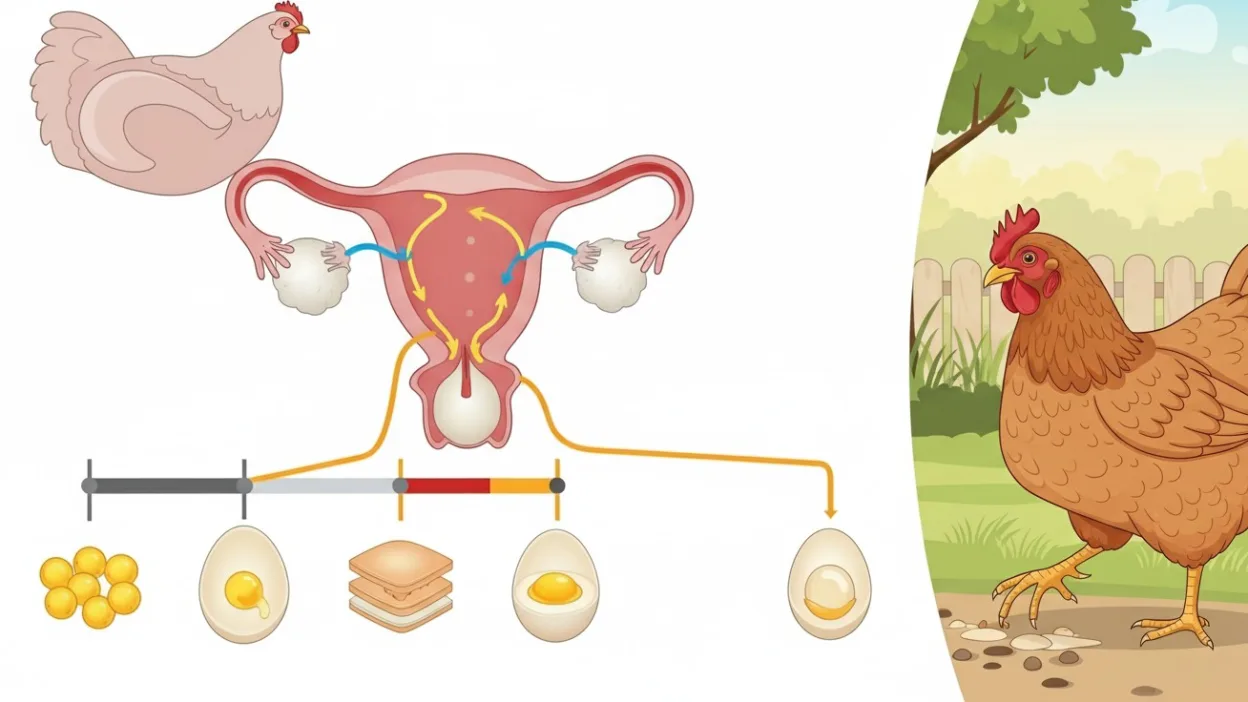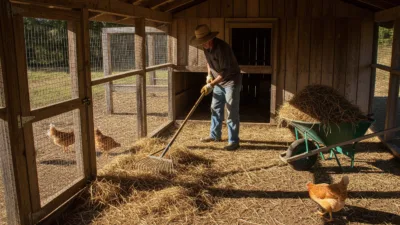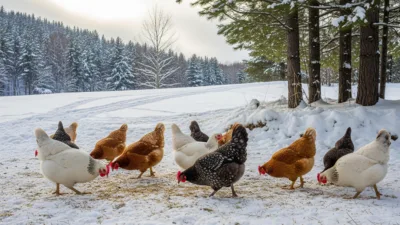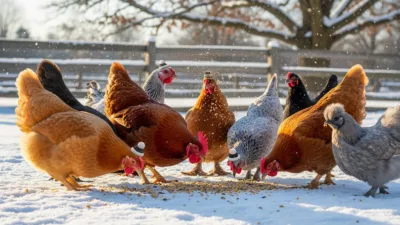Raising backyard chickens has become a popular choice for many urban and suburban homesteaders. Fresh eggs, sustainable living, and the joy of watching hens scratch around the yard make chicken keeping rewarding. But one of the most common questions new chicken owners ask is: What does the egg-laying cycle of backyard hens look like?
Understanding the egg-laying cycle helps you manage your flock better, maximize egg production, and ensure the health of your hens. In this guide, we’ll explain each stage of the cycle, what factors affect egg laying, and how you can support your hens for consistent results.
How the Egg-Laying Cycle Works
The egg-laying cycle of hens is a natural biological process influenced by age, breed, light, diet, and environment. A healthy hen can lay between 200 and 300 eggs per year, but the exact cycle varies.
The cycle can be divided into four main stages:
- Maturation Stage – When hens reach laying age.
- Peak Production Stage – When hens lay the most eggs.
- Maintenance Stage – When egg production stabilizes.
- Decline Stage – When egg laying gradually slows.
Each stage is influenced by hormones, daylight hours, and the hen’s overall health.
Stage 1: Maturation – When Hens Start Laying
Most backyard hens begin laying eggs between 18 and 24 weeks of age. The exact age depends on the breed.
- Early layers (like Leghorns) may start as early as 16 weeks.
- Dual-purpose breeds (like Rhode Island Reds and Plymouth Rocks) usually begin at 20 to 22 weeks.
- Heritage breeds may take longer, sometimes up to 28 weeks.
Signs your hens are about to start laying:
- Bright red combs and wattles.
- Squatting behavior when approached.
- Increased time spent exploring nest boxes.
Once a hen starts laying, her reproductive system follows a regular cycle unless interrupted by molting, stress, or seasonal changes.
Stage 2: Peak Egg Production
The first year of laying is when most hens produce the greatest number of eggs. At peak production, a healthy hen may lay 5 to 7 eggs per week.
Key factors that influence peak production:
- Daylight – Hens need about 14 to 16 hours of light daily to maintain high egg production. In winter, shorter days naturally reduce laying.
- Nutrition – A diet rich in protein, calcium, and vitamins supports consistent egg laying. Layer feed is designed to meet these needs.
- Stress Levels – Noise, predators, overcrowding, or poor coop conditions can slow egg laying.
Stage 3: Maintenance – Consistent Egg Production
After the first year, egg production typically levels off. Most hens will lay 3 to 5 eggs per week, depending on breed and conditions.
This is the most stable phase, where hens continue laying reliably for 1 to 2 years. However, seasonal changes still play a role:
- Summer: Higher egg production due to longer daylight hours.
- Winter: Reduced or paused laying if no supplemental light is provided.
- Molting: Once a year, hens shed feathers and take a break from laying for 6 to 8 weeks.
Stage 4: Decline in Egg Production
By year 3 or 4, egg production begins to decline noticeably.
- Older hens may lay only 1 to 3 eggs per week.
- Some may stop altogether during winter or stressful conditions.
Even though egg production decreases, older hens contribute in other ways:
- Fertile eggs for hatching if you keep a rooster.
- Excellent pest control in gardens.
- Rich compost from manure.
Many backyard chicken keepers continue to keep older hens as part of their flock for companionship and sustainability.
What Happens Inside a Hen During the Cycle
The egg-laying process takes about 24 to 26 hours. Here’s what happens step by step:
- Yolk Release (Ovary) – A yolk is released from the ovary.
- Fertilization (Optional) – If a rooster is present, fertilization occurs.
- Egg White Formation (Magnum) – The yolk is coated with egg white (albumen).
- Shell Membrane Formation (Isthmus) – Thin membranes form around the egg.
- Shell Formation (Uterus) – The shell is formed and strengthened with calcium, taking about 20 hours.
- Laying – The egg is laid through the cloaca, usually in the morning.
Factors That Affect the Egg-Laying Cycle
Several conditions influence how consistently your hens lay eggs:
- Breed: Commercial breeds like Leghorns are prolific layers, while ornamental breeds lay less.
- Diet: A balanced layer feed ensures proper protein and calcium intake.
- Lighting: Artificial lighting during winter can maintain egg production.
- Stress: Overcrowding, predator threats, or frequent disturbances disrupt laying.
- Age: Younger hens lay more frequently than older hens.
- Health: Parasites, illness, or poor living conditions reduce productivity.
How to Support Egg Production
If you want to maximize your hens’ productivity throughout their egg-laying cycle, here are proven strategies:
- Provide Layer Feed: Rich in protein and calcium to support strong eggshells.
- Supplement with Calcium: Offer oyster shell or crushed eggshells.
- Fresh Water: Hens need constant access to clean water.
- Adequate Space: At least 3 to 4 square feet per bird inside the coop.
- Nesting Boxes: One nest box for every 3 to 4 hens to reduce stress.
- Consistent Light: Use safe artificial lighting in winter to maintain production.
- Parasite Control: Regularly check for mites, lice, and worms.
Common Questions About Egg-Laying
How long do chickens lay eggs?
Most hens produce well for 2 to 3 years, with gradual decline afterward.
Do chickens lay eggs year-round?
Not always. Many stop during molting and winter unless provided with artificial light.
What time of day do hens lay?
Most hens lay in the morning or early afternoon, though timing can vary.
Final Thoughts
The egg-laying cycle of backyard hens is a fascinating process that every chicken keeper should understand. From the excitement of the first egg to the gradual slowdown in older hens, each stage is a natural part of your flock’s life.
By providing the right nutrition, lighting, and environment, you can support your hens for consistent egg production and enjoy fresh, nutritious eggs from your backyard for years.
Whether you are a beginner raising your first flock or an experienced homesteader, knowing how the egg-laying cycle works will help you care for your chickens more effectively and sustainably.



